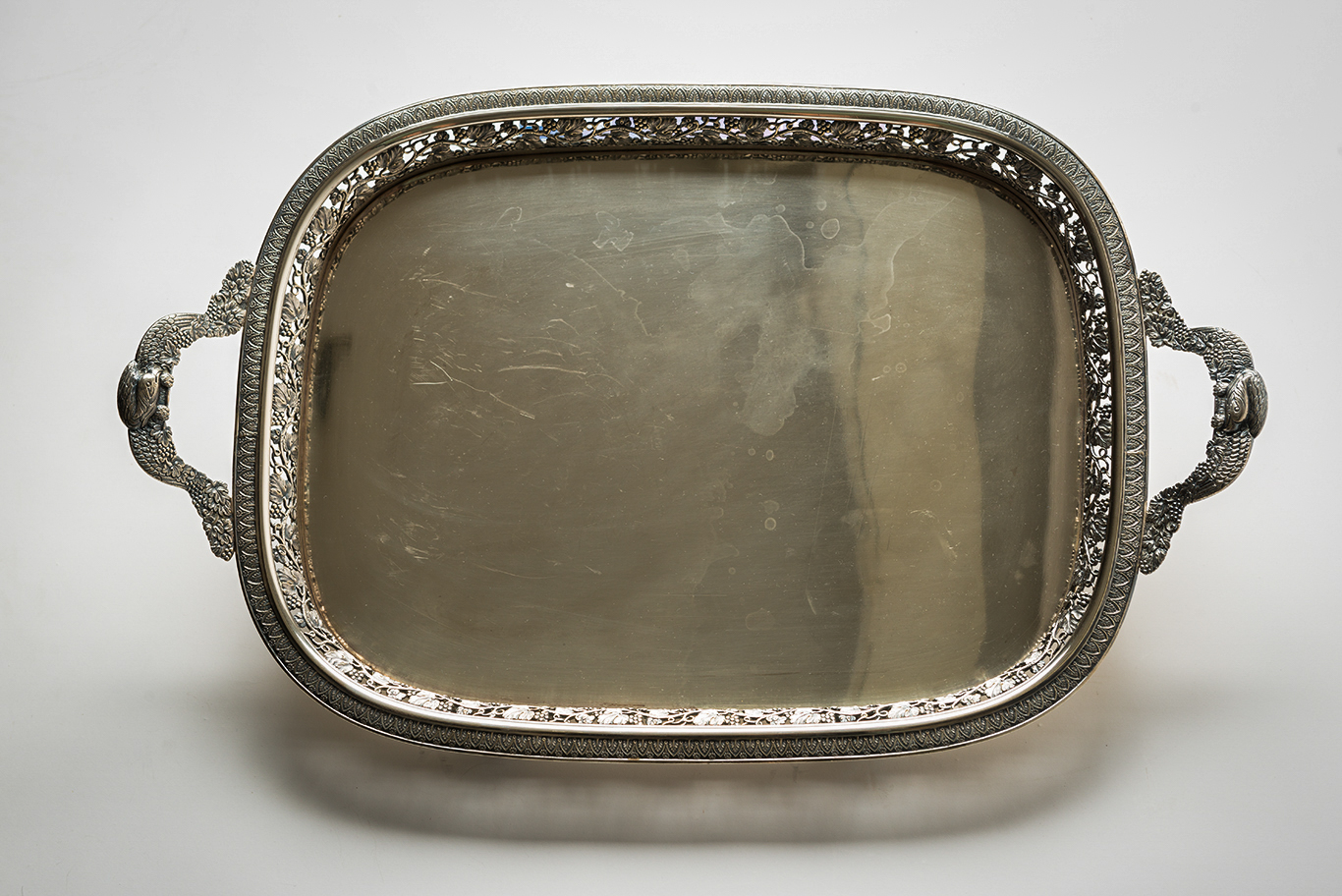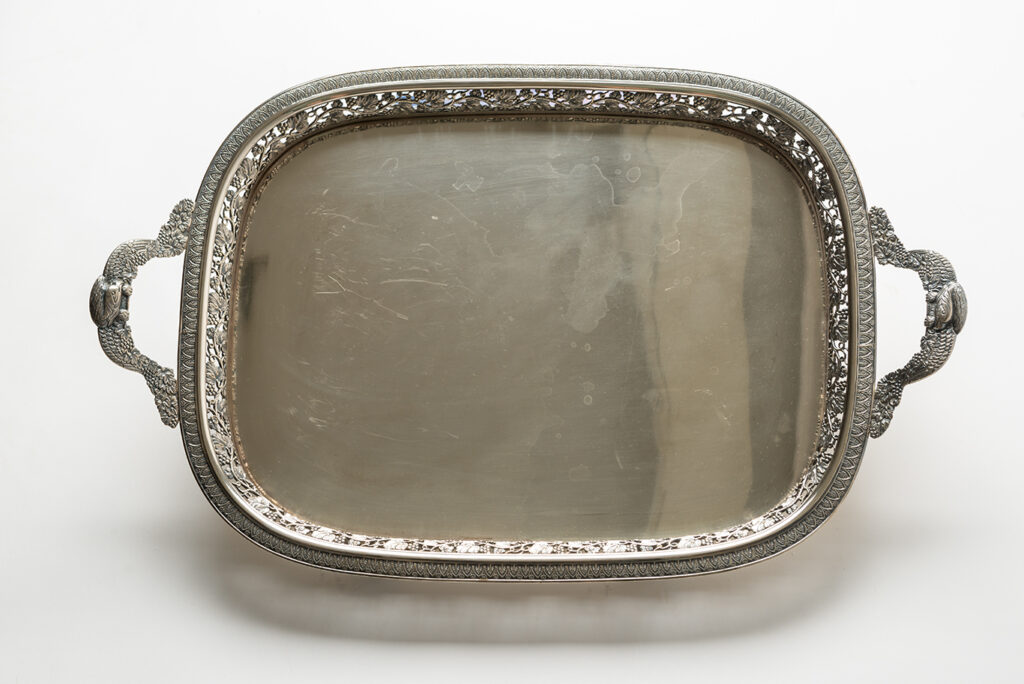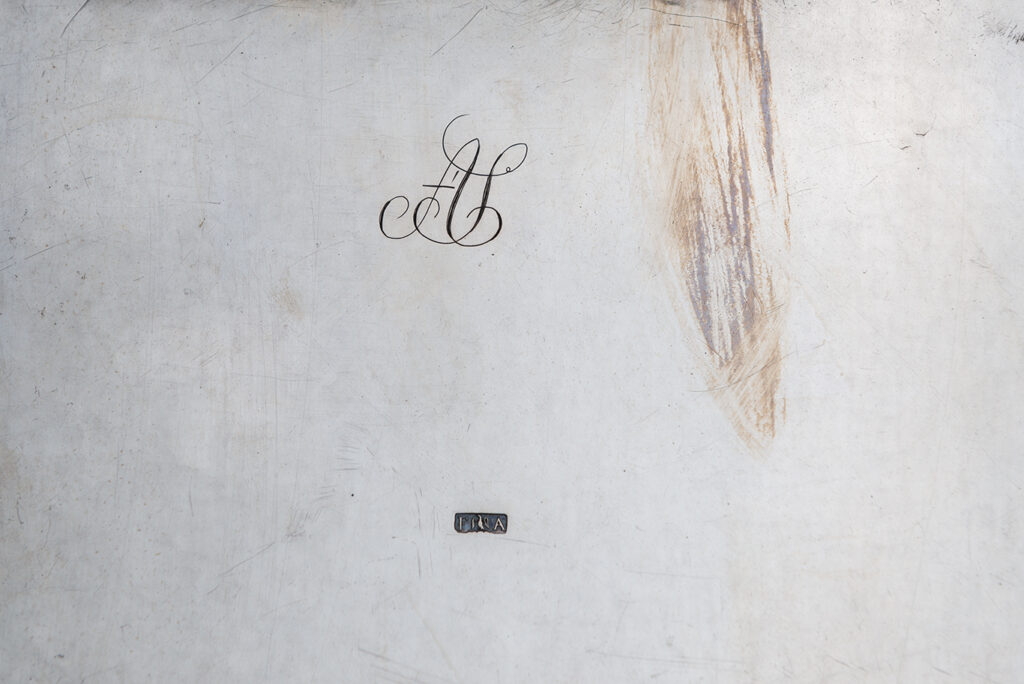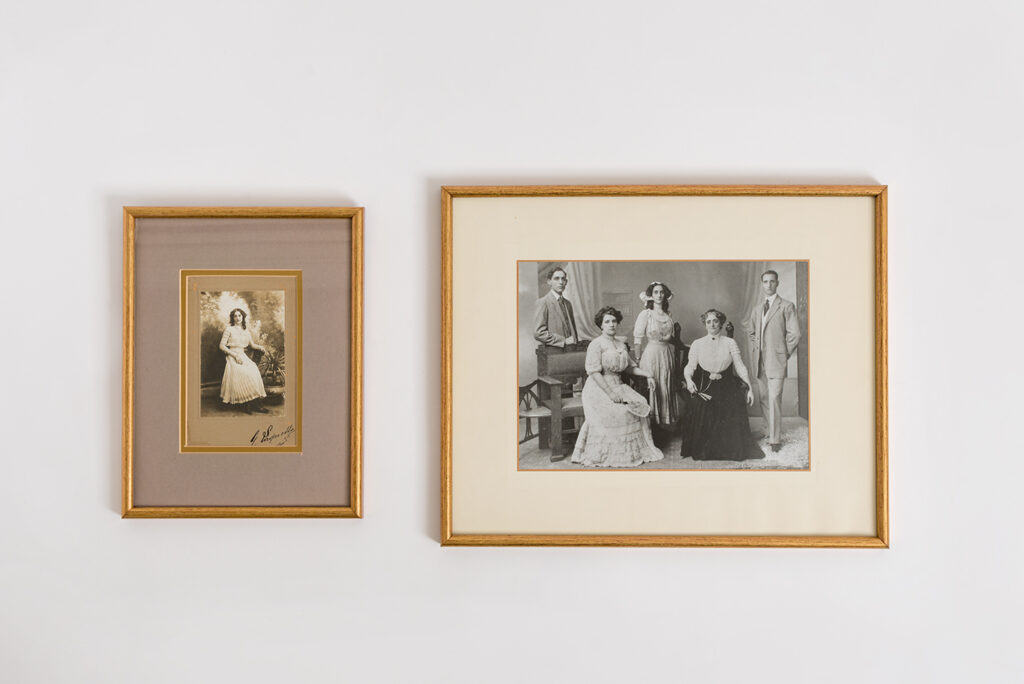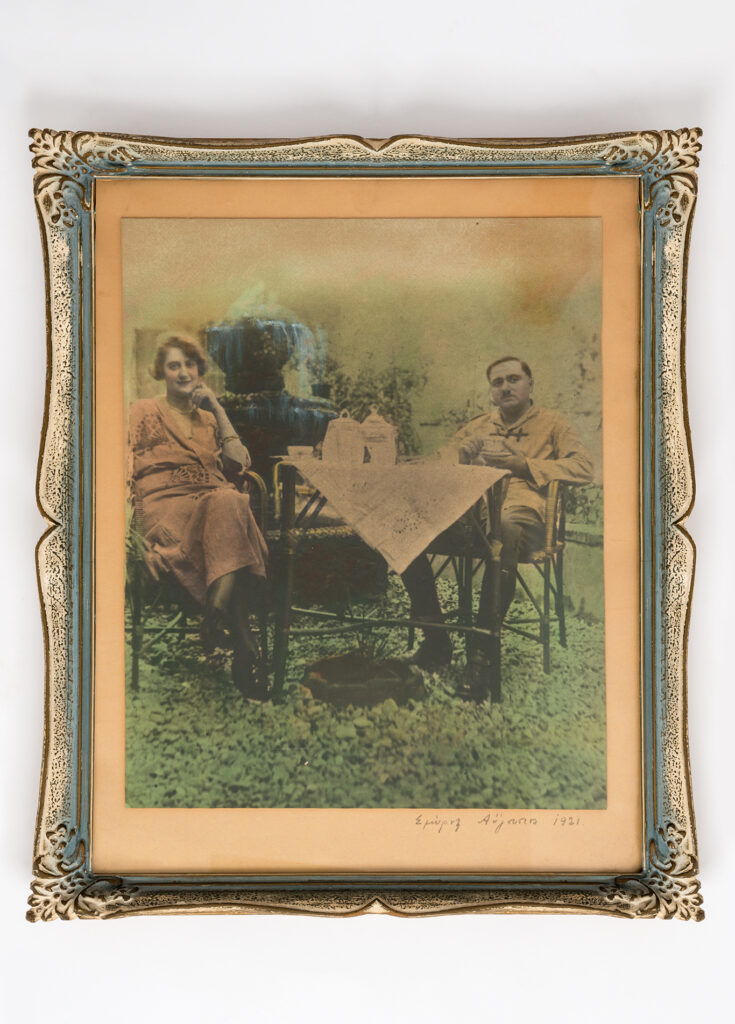Anthony Scudamoor or Skudamoor left Britain some time during the first half of the 19th century and eventually ended up in Smyrna. With him he had taken a silver tray, intricately decorated and engraved with his initials. The tray was later passed on to his children and grandchildren. Petros Skidmor (over the course of time the surname was hellenised), Anthony’s son who worked as a carpet merchant, married Sofia Ladopoulou and had four children: George, Ofilia, Anna and Sergios Petros. Anna, who was born in 1894, grew up in a sheltered, bourgeois environment. In 1921, she got married to Gerasimos Karantinos, a Greek army officer born in 1896, and therefore lost her British citizenship. Karantinos’ family hailed originally from Kefallonia, but he was born and raised in Vraila (Brăila), Romania, returning to Greece to become an officer after his family was financially ruined.
Anna and Gerasimos had two children, Kleio, who was born in Smyrna in 1922, and Alexandros, who was born in Athens in 1925. Anna left Smyrna without her husband who did not manage to escape and was sent to a forced labour battalion. Their house was burned down during the burning of Smyrna. A few days later, Anna left Smyrna with her daughter and a servant. She chose to take with her the tray and a small case of matching silverware, along with her jewellery. At the last moment, she realized carrying the tray would require the use of both her hands, so she wrapped it and left it behind at her cousin’s home where she had been staying. During the journey, they got separated from the servant who was carrying the silverware case and lost her. For years, Kleio wondered if the girl had survived.
When Anna made it to Greece, she soon received a letter through the consulate. A French man had gone to her cousin’s house. He found the monogrammed tray and wished to return it to its owners, asking for an address to send it to. The tray was first sent to Constantinople, to Gerasimos’ brother and from there, to Greece. Anna did not like talking about Smyrna. Perhaps, it was her way of mourning for the status and the prestige she had lost. However, she did keep the tray and passed it on to her daughter, Kleio. Kleio used this tray in family ceremonies, mainly weddings where it was used as a display for the wedding wreaths. She polished the tray often and passed it on to her daughter, Anna Kyriadou. For Anna, this well-travelled tray encapsulates her family’s history.
—
We wish to express our warmest thanks to the Folklife and Ethnological Museum of Macedonia and Thrace and to the folklorist-museologist Rena Botsiou for their contribution to our research.
Images: Nikos Tsiokas
